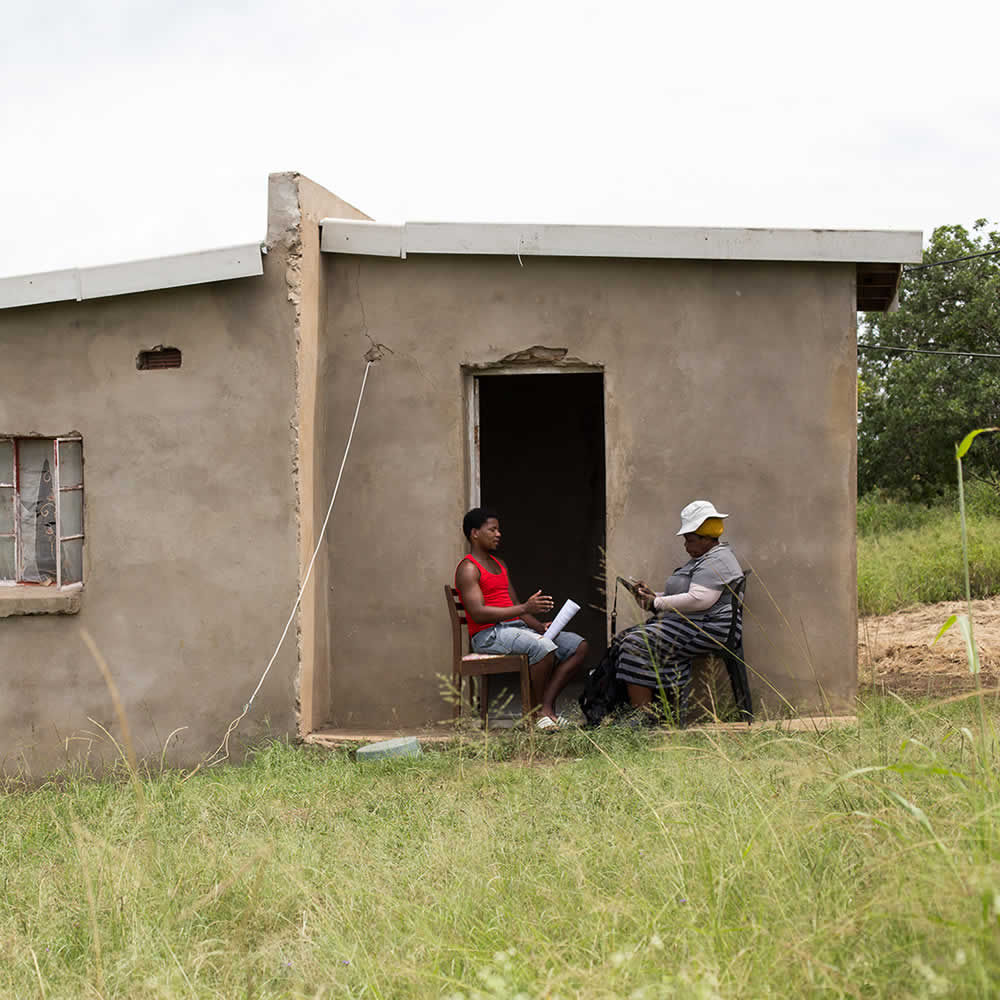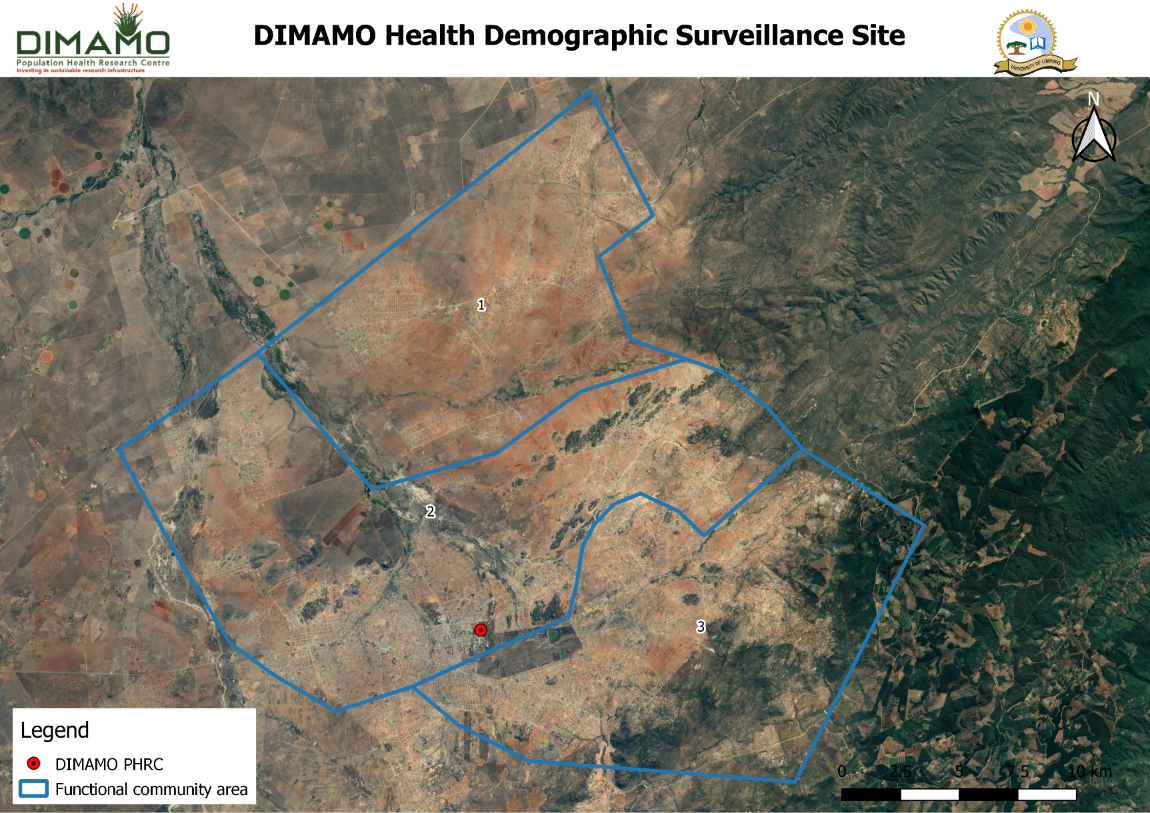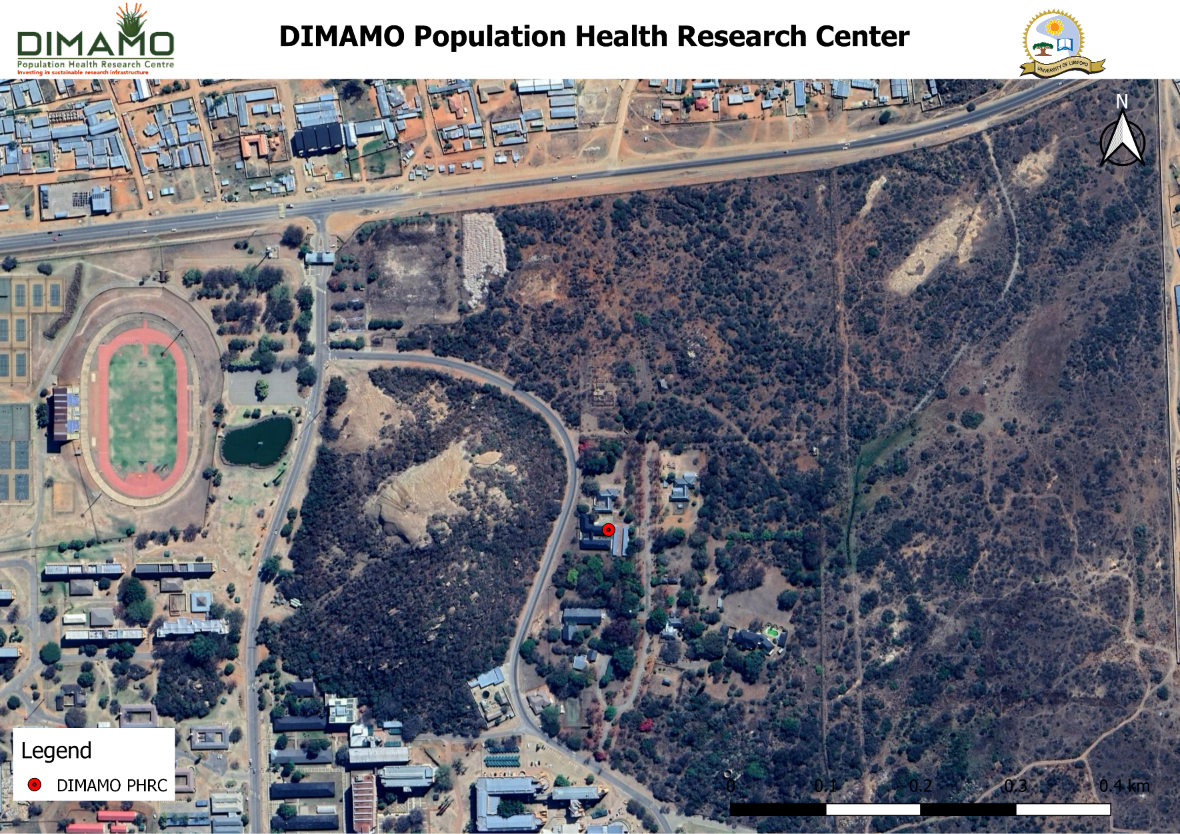HDSS Nodes
DIMAMO
Population Health Research Centre
DIMAMO Population Health Research Centre (PHRC) operates as a rural node of SAPRIN's Health and Demographic Surveillance System (HDSS), situated in the Eastern Region of Capricorn District in Limpopo Province, South Africa. Covering a population of approximately 116,000 individuals across various villages under the traditional leadership of Tribal Authorities of Dikgale, J Mamabolo, AMamabolo, and Mothibia. DIMAMO PHRC focuses on population health research in a rural and socioeconomically disadvantaged area.
Since its establishment in 1995, DIMAMO PHRC has conducted triannual surveillance, now using telephone-based data collection methods. With the assistance of household proxies, this surveillance captures vital information such as births, deaths, migrations, and household socio-demographics. Additionally, an annual individual bio-behavioural survey is conducted with over 65,000 consenting individuals aged 15 and above residing in the surveillance area. This comprehensive data collection approach ensures the collection of intensive longitudinal data that is linked over time and provides a comprehensive understanding of participants' health and sociodemographic profiles.




